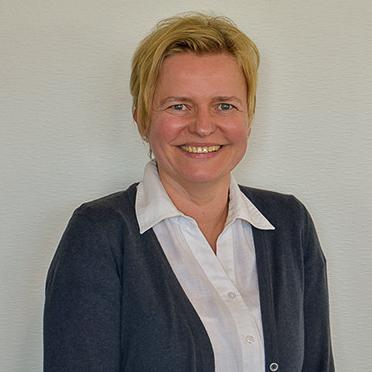The European Green Deal is a roadmap of policy initiatives to boost the efficient use of resources and accelerate the movement towards a clean and circular economy in Europe. Presented by the European Commission (EC) in December 2019, this ambitious roadmap covers all sectors of the economy and outlines the required investments and financing tools - the Green Deal aims to put Europe on the path towards becoming the first climate-neutral continent by 2050, decoupling economic growth from resource use.
Though released before the COVID-19 pandemic, this initiative has recently taken on greater significance, with many policy-makers now calling for a green and ambitious recovery from the economic crisis caused by COVID-19 outbreak – a call echoed by health professionals across the world. Through organisations or individually, more than 40 million health professionals from 90 different countries have called upon the G20 leaders for a healthy recovery.
The Green Deal impacts the healthcare sector in Europe in many ways; the policies, regulations, and strategies that will be laid out in the coming months and years under the Deal may offer unprecedented opportunities for hospitals and health systems in Europe to achieve their sustainability goals. The principle of “do no harm” underpins the Deal, and resonates strongly with healthcare workers everywhere. This principle is closely aligned with HCWH Europe’s vision that the sector should not only protect the communities it serves, but also the environment - itself a critical component of human health.
As part of our Insight blog series, this month the HCWH Europe team highlights how the Green Deal directly supports HCWH Europe’s vision of a sustainable healthcare sector. Subsequent posts will focus on specific policies, regulations, and strategies, with more in-depth analyses of what the Deal will mean for our members in Europe.
Image
 Safer Chemicals
Safer Chemicals
Image
 Climate-smart Healthcare
Climate-smart Healthcare
Image
 Safer Pharma
Safer Pharma
Image
 Sustainable Food
Sustainable Food
Image
 Sustainable Procurement
Sustainable Procurement
Image
 Safer Chemicals – Dorota Napierska
Safer Chemicals – Dorota Napierska

Included in the Green Deal is a plan to produce a Chemicals Strategy for Sustainability that will cover vital issues such as endocrine disruptors, hazardous chemicals in products, combination effects of different chemicals, and very persistent chemicals. This strategy will be a first step towards a toxic-free environment, in synergy with the forthcoming Zero Pollution Action Plan (planned for 2021). The Chemicals Strategy for Sustainability will also support many other healthcare priorities in Europe, such as cancer prevention and the manufacturing and supply of safe and affordable medicines.
The EU will continue to support the production of essential chemicals, including those vital for healthcare in Europe such as disinfectants, pharmaceuticals, and medical devices. Whilst many of these products can currently contribute to hazardous exposures, the proposed strategy importantly promises to encourage development and production of safe and sustainable alternatives. We look forward to the implementation of policies that support the next generation of inherently safer materials and circular products that will contribute to non-toxic healthcare.
Image
 Climate-smart Healthcare – Scott Brady
Climate-smart Healthcare – Scott Brady

Combatting climate change within the healthcare sector must be fought on two fronts. Firstly, it is a frontline service tasked with treating the health impacts of climate change; secondly, the sector contributes its own significant share of harmful emissions (4.7% of total EU emissions) through its operations, undermining the health of the very people it is trying to heal.
Climate action is core to the Green Deal - the EC has committed to a range of activities to strengthen Europe’s ambitions, starting with Europe’s first Climate Law, which aims to enshrine the EU’s 2050 net-zero emissions target into law, as well as introduce (via amendment) a stricter 2030 target. The EC has also committed to reviewing “all relevant policy instruments” to bring further reductions in GHG emissions. Notably, this includes clean energy, building and renovation, eliminating pollution, and sustainable mobility. To meet this increased ambition, it is essential for the healthcare sector to demonstrate leadership by reducing its own emissions. Through our networks and initiatives (such as the European Healthcare Climate Council and Health Care Climate Challenge), we are already seeing ambitious decarbonisation commitments by healthcare providers across Europe.
With increased ambition and a strengthening of policy, the healthcare sector has a key role to play in helping Europe meet its ambitions. Whilst this places greater pressure on the sector to reduce its own emissions, it also offers the sector an opportunity to use its trusted voice, lead by example, and educate and advocate on the links between climate and health.
Image
 Safer Pharma – Jean-Yves Stenuick
Safer Pharma – Jean-Yves Stenuick

The Green Deal is a paradigm shift in Europe - it puts the environment at the centre of EU policy making and envisions a toxic-free environment to protect Europe’s citizens and ecosystems. In the Deal, the EC acknowledges the need to act in preventing and reversing pollution and commits to release an ambitious Zero Pollution Action Plan for air, water and soil in 2021.
This action plan will address particularly harmful sources of pollution such as pharmaceuticals, and seeks to restore the natural functions of surface water (a common route of pharmaceutical pollution through wastewater treatment plants). The plan will also consider the combined effects of different pollutants - very relevant in the case of pharmaceuticals where mixture effects can have a greater joint ecotoxicity.
The Green Deal also commits the EC to reviewing measures to address pollution from large industrial installations, to use its economic power to ensure that its standards apply across value chains, and to ensure that international norms are in line with its environmental and climate ambitions. The Deal acknowledges that it is not enough to reduce or eliminate pharmaceutical pollution in Europe, we also need to ensure we are not exporting these problems abroad. This is particularly crucial for the healthcare sector’s supply chain - the pharmaceutical industry largely outsources the manufacture of active pharmaceutical ingredients outside Europe where weaker oversight and regulation has been the source of various environmental pollution scandals. To meet the objectives of a green economy, the EU regulatory framework needs to address the environmental implications of production throughout the supply chain.
The healthcare sector also has a key role to play - it can leverage its purchasing power to increase demand for more sustainable production of pharmaceuticals and the development of drugs that are less harmful for the environment. Healthcare professionals are also well positioned to help reduce the risk for accumulation of unused pharmaceuticals that can end up in the environment and educate patients on ways to reduce waste and unnecessary emissions.
Image
 Sustainable Food – Paola Hernández Olivan
Sustainable Food – Paola Hernández Olivan

The European Commission’s Farm to Fork Strategy (F2F), along with many closely related policies, forms a key part of the European Green Deal. Combined with an Action Plan listing 27 measures to make food healthier and greener, the strategy represents a unique opportunity for the healthcare sector to be a driver for positive change and reduce its environmental footprint while ensuring food security.
Measures proposed in the strategy include the introduction of more ambitious targets to reduce the use of pesticides and inappropriate antimicrobials in the agricultural sector, as well as to reduce food waste, regulate marketing of unhealthy food, and support sustainable public food procurement. Learn more about the F2F Strategy in HCWH Europe’s public response and analysis.
Many of the plans and strategies within the Green Deal are importantly interconnected, including the F2F strategy and the Europe Beating Cancer Plan – which aims, in part, to reduce cancer incidence (and other non-communicable diseases) through healthier foods. The link between these strategies is important - it builds a solid, effective, and equitable approach to advancing healthy and sustainable food, helping to create a health-enabling food culture where the healthy option is the easiest and most affordable one. The healthcare sector procures a significant amount of food products and services, and can therefore use this influence to help transform our food system for the future of our planet and health.
Image
 Sustainable Procurement – Arianna Gamba
Sustainable Procurement – Arianna Gamba

The Circular Economy Action Plan (CEAP), released as part of the Green Deal, is a non-binding policy initiative that foresees the development of 35 measures aimed at promoting sustainable growth within the planetary boundaries. This represents an exciting opportunity for the healthcare sector because several of the proposed measures, if correctly implemented, could help overcome some challenges in healthcare procurement related to sustainability, such as the supply of sustainable goods available on the market, and a lack of product information.
Further measures proposed in the CEAP include minimum mandatory green public procurement (GPP) criteria, targets in sectoral legislation, as well as compulsory reporting to monitor the uptake of GPP. Another encouraging measure is the announcement of the Sustainable Product Policy, which is a crucial step in ensuring products’ sustainability by improving their durability, reusability, upgradability and reparability. Within the CEAP, the revision of the EU consumer law should improve transparency and increase access to product information, with an obligation for companies to substantiate their environmental claims. Similarly, the revision of the Non-Financial Reporting Directive will enhance companies’ disclosure of their environmental and social responsibility data. Read HCWH Europe’s response to the EC’s draft Roadmap for the New Circular Economy Action Plan.
The healthcare sector has an opportunity to leverage its purchasing power to drive policies and markets towards ethically produced, healthy, sustainable products and services. To do so, it is important that we work with our members to help shape policies related to the CEAP and the revision of the Non-Financial Reporting Directive. Representing the interests and experiences of the healthcare sector in this important policy debate will assist policy-makers in making informed decisions that help hospitals and health systems achieve their environmental goals, reduce their environmental footprint, and ultimately protect the health of the communities they serve.
Our members are using innovation, ingenuity, and investment to transform the health sector and create a healthy future for people and the planet.
Join the sustainable healthcare movement today: